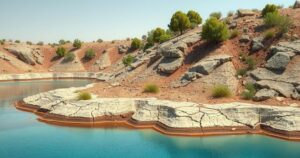Study Debunks Nuclear Test Claims Following October 2024 Iran Earthquake

A new study has clarified that the October 2024 earthquake in Iran was not a nuclear test but a natural seismic event. Misinformation spread rapidly on social media, especially in English-language media, contrasting with more accurate reporting in Persian-language outlets. The authors of the study call for better collaboration among scientists to combat misinformation.
A recent study by scientists at Johns Hopkins University has dispelled claims that a magnitude 4.5 earthquake in Iran on October 5, 2024, was a covert nuclear weapons test, as many alleged on social media and in some mainstream media. The researchers asserted that the seismic data revealed a natural fault-driven event rather than any nuclear activity. Published in the journal Seismica, the study emphasizes the critical importance of accurately interpreting scientific data amidst geopolitical tensions.
The earthquake occurred approximately 50 kilometers southwest of Semnan and 216 kilometers east of Tehran, highlighting Iran’s location within a seismically active region caused by the interaction of the Arabian and Eurasian tectonic plates. By analyzing seismic signals and using information from monitoring stations, the research team identified the earthquake as originating from a reverse fault associated with tectonic compression, distinguishing its characteristics from those of a nuclear explosion.
Following the earthquake, misinformation spread rapidly. Social media platforms amplified claims of a nuclear test just 17 minutes after the seismic event, fueled by misinterpretations of data relating to an unrelated earthquake in Armenia. Despite the clarity of scientific evidence, a conspiracy theory connecting the Iranian earthquake to another seismic event in Israel gained traction, with posts originating from accounts linked to disinformation campaigns.
The phenomenon of misinformation was particularly prevalent in English-language media, notably affecting coverage in India, where outlets often referenced incorrect seismic data, perpetuating the nuclear test narrative. In contrast, Persian-language media generally reported accurate information about the earthquake, utilizing local expertise and official data to clarify its nature.
To address the challenges posed by misinformation, the researchers recommended enhanced rapid-response collaboration among seismologists and scientific agencies. They emphasized the necessity for timely fact-checking and the issuance of detailed scientific reports to counter false narratives effectively. Engaging social media platforms in these initiatives could help to amplify credible scientific information.
The false claims surrounding the October 2024 earthquake in Iran arose amid heightened geopolitical tensions and misinformation campaigns that exploited social media. The study conducted by Johns Hopkins University serves as a critical reminder of the importance of rigorous scientific validation, particularly in contexts where misunderstanding seismic events can lead to significant geopolitical ramifications. Historical precedent shows that similar earthquakes in the region did not correlate to nuclear tests, reinforcing the necessity for accurate communication of scientific findings during crises. The complexity of deciphering seismic data necessitates a deep understanding of geological phenomena, which is often undermined by the rapid spread of misinformation. This situation underscores the need for effective dialogue between scientists, media, and the public to ensure that credible information prevails over sensationalism or politically motivated narratives.
In conclusion, the study led by Johns Hopkins University successfully debunks the misinformation regarding the October 2024 earthquake in Iran, providing clear evidence of its natural origins. The rapid spread of false claims highlights the pressing need for accurate scientific communication and the mitigation of misinformation during times of geopolitical tension. Collaborative efforts between scientists and social media platforms can facilitate the dissemination of credible data to the public, thereby preventing similar occurrences in the future.
Original Source: hub.jhu.edu






